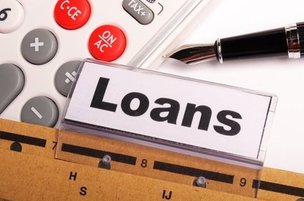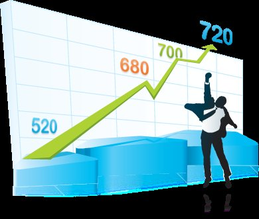 There is no foolproof way of getting out of debt. All of the debt relief options have successes and failures. The failed attempts have varying reasons that can include being in the wrong program or inability to commit to the program. This is why it is important that you know the risks involved in every debt solution so you can prepare for them and make sure that you will be part of the success statistic. One of the most frowned upon solutions for credit problems is debt consolidation loans. It is not that the concept is flawed. Financial experts do not make it a first option because it has a lot of potential to go wrong. But if you know what they are, you should be able to avoid them easily. So what are the risks involved in debt consolidation loans? First is the risk to grow your debt. This is how debt consolidation through a loan works. If you have mostly credit card debt, you want to make significant payments on your debt without having to pay so much on fees and interest rates. You will achieve this by getting a loan that has a low interest rate. The loan amount that you will target should be big enough to cover all your credit card balance. When your loan is approved, you pay off your credit card debts, thus having them all revert to zero balance.In most cases, people get tempted to reuse their cards simply because the balance is low. They are deluded into thinking that their debts are not so big when all they actually did was to shift the debt around. If you are not careful with your credit card, you may end up growing what you owe. Another potential risk is losing a valuable asset. There are two ways for you to get a low interest loan: a good credit score or a collateral. These two will make you a low risk borrower. If you do not have a good credit score, you may resort to using a valuable personal asset to lower the interest on your loan. This is probably alright if you have a steady income but if that is suddenly compromised, you may lose the collateral that you used on your loan. Lastly, there is a risk that you will not really learn your lesson. As important as it is to get out of debt, you want to make sure that you will not land in the same situation again. That being said, you need to identify why you got into debt and how you will ensure that it will not happen again. This is not part of the debt consolidation loan program as it only concentrates in paying off what you owe. It is only upon your own personal effort that you can successfully stay out of debt. Be sure to practice the right financial management skills that includes smart spending habits, savings and budgeting. These are the keys to prolonging the debt freedom that you worked so hard to reach.
 If you like the idea of consolidating your debts, you have two options that can serve as your debt relief method. They have differences and similarities and it is important for you to know them so that you can make a smart decision as to how you will solve your debt problems. Let us discuss them one by one. Debt consolidation loans is a type of debt relief that uses a big loan amount to pay off everything else that you owe. If you have three card debts worth $2,500 (debt A), $5,000 (debt B) and $10,000 (debt C), you will need at least a $17,500 loan to pay them off. If the $17,500 is approved, you will use it to completely settle debt A-C. That will consolidate your debt amount into the new loan that you just made. With the debt being stretched over 5 years, you can expect a lower monthly payment. Ideally, you should compute the average interest rate of your other debts. Whatever you have computed will be your ceiling in terms of the interest rate on your new debt. Do not get a loan that will ask you to pay a higher interest than your current average. Usually, the low interest can be achieved by having either one of these: a good credit score or a collateral. Both of these will show that you are a low risk borrower and thus will prompt the lender to give you a low interest rate. The other type of debt consolidation is known as debt management. Unlike the previous option, this requires the aid of a debt or credit counselor. When you enroll your debts with a credit counseling agency, you will be assigned one and they will look at your finances to see how you can make your debt payments. The counseling part is free. But if you want to take the service further to debt management, you will be asked to pay a fee that is no more than $50 a month. If you have fewer debts, you will pay less in terms of the service fee. You will begin by creating a debt management plan (DMP) that will serve as your guide throughout the program. This will be custom made to suit your financial capabilities. The counselor will stretch your payments over a longer payment period so you can make lower monthly contributions towards your debts. They will negotiate with your creditor to approve this payment plan and they will guide you until its completion - or at least until you decide to pull out from the program, which is not really advised. Once the creditor accepts the DMP, you will make single payment contributions to the counselor who will distribute the funds to the respective creditors. They will also try to negotiate with the creditor to lower your interest rate - but this usually happens once you are already updated on your payments. Both of these options, debt consolidation loans and debt management, will require you to have a steady income. Despite a lower monthly payment, there will be no debt reduction on your current balance. The longer terms will see to it that you will be required lower dues. When choosing between the two, look at the requirement list and see which among the two you can meet. For instance if you have a bad credit score and if you do not have a collateral or you do not want to put it on the line, then debt management is your best option. Another consideration is the methods. In debt management, all the accounts enrolled in the program cannot be used - this will not happen in debt consolidation loans.
 If you are in debt, your credit score has surely been damaged at a certain extent. Even as you pay off your credit obligations, you will find that your score will continue to suffer - at least if you chose either bankruptcy or debt settlement as your debt relief options. When you have finished paying off your debts, one of the first things that you will be advised to take care of is your credit report. You need to repair what was damaged so your finances can regain its full potential. Your credit score is very important because it will allow you to get financial aid should you need it. That can be in the form of a new home or a business that you want to finance. Depending on your choice of debt relief program, you can actually start rebuilding your credit score even as you are paying off your dues. For instance, if you chose debt consolidation, you can actually improve your score by just keeping your payments up to date. But if debt settlement is your choice of program, then you may have to postpone rebuilding your credit score until after the creditor or collector agreed to settle with you. By regardless if your debt relief program can or cannot allow you to rebuild your credit, here are the things that you can do to improve your score. Start your efforts by applying for a new credit. In debt consolidation loans, this is a no brainer because that is exactly what you will do. You will apply for a loan and this time, you will do things right. This is your chance to begin a new slate and as you make one payment after the other, your credit score will pick up that good behavior and it will be shown in your report. There is nothing you can do with your past bad credit but for new ones, it is your chance to display good paying habits. Of course, we are referring to paying your dues on time. Another thing that you can do is to stop acquiring debts. If you continue to add to your credits, that will lower your score further. You need to stop using your credit cards and start spending only what you can afford to pay in cash. If you enrolled in a debt management program, you will actually be asked to stop using your credit account. But for the other programs, like in debt consolidation loans, your cards will not be put under restriction. You just need to make the conscious effort to stop using them. Ultimately, developing proper financial management skills and practicing new habits will be the keys to increase your score. Apparently, something has to change. If what you did before was right, then you wouldn’t be in the debt situation you are currently in and your score would not be so low. That means you need to change something about your spending and how your manage your personal finances.
 When you have more than one debt, one of the things that you want to happen is to keep your payments simple. But with all the different accounts, due dates, interest rates and balances, monitoring all your debts can be quite a vexing task. If you fail to monitor your debts correctly, you may end up being charged with late penalty fees and other finance charges. Especially with credit card debt, this can easily accumulate into significant amount that can leave you in worse shape than you have ever been. To avoid this scenario, you may want to consider using debt consolidation as your primary solution to get out of your credit problems. There are two ways to consolidate your debts. One is through debt consolidation loans and the other is through debt management. In the former, a debtor applies for a big loan with an amount that can cover all or most of their debts. If this is your choice, you will pay off the other debts so you can pool in your funds to pay for this bigger loan. In debt management, you will work with a debt or credit counselor who will help you create a DMP or debt management plan. This will be your roadmap as you try to eliminate your debts. These counselors will also negotiate with creditors on your behalf. The whole negotiation will be based on the DMP created. The whole idea is to get the creditors to accept this new payment plan. The consolidation happens because the counselor will take over distributing the payments to various creditors. You will send the payment to them and they in turn will make sure that it is transferred to the creditors account on or before the due date. Both of these will help the debtor successfully consolidate their debt payments into one manageable account. This is an advantage because the effort that you put into monitoring all your credit accounts can be used to fuel your attempts to grow your debt payment fund. Incidentally, you will need a steady income for both of these options so that particular fund will have a source to grow from. These two will also ensure a lower monthly payment. Debt consolidation loans are usually stretched over 5 years. The same is true for a debt management plan. These two will allow you to have extra money to take care of other needs that you may have. This can help relieve the otherwise discouraging effects of being in debt. The difference about both is that loans will not require the aid of a professional. In debt management, the presence of a debt counselor is somewhat necessary. Another difference is there are more requirements when it comes to loans. You need a good credit score or a collateral so you can receive a good deal out of the loan that you will take. Otherwise, you could be given a high interest rate on your loan. If this rate is higher than the average of your current debts, then it wouldn’t have been an improvement from your previous det condition. These requirements are not really needed in debt management. Both of these options will allow you to pay off your debts but you need to consider the differences carefully. Each of them work on specific types of debt - for instance, mortgages can be included among the debts that you will pay for with debt consolidation loans. Most if the time, debt management only deals with unsecured debts. As you make a choice, consider your finances carefully so you are assured that you will opt for the right debt relief program.
 Before you can actually choose the type of debt relief that you will use for your credit problems, it is a wise move to know what you can afford to pay first. While financial analysis is not always a requirement, it should be practiced nevertheless at the beginning of any debt relief effort. You have to start taking charge of your finances not just to grow your debt payment fund but also to make sure you stay out of it. As you make a personal financial analysis prior to debt relief, there are only three categories that you can fall into. Financial Capability 1: With enough money to spend on basic necessities and debt payments. This is probably the luckiest among the three categories. This means the financial capability of the debtor is big enough to cover their daily needs plus the minimum payments of their various credit accounts. While it is fortunate that your income is enough to cover all your financial obligations, you will not be qualified for any debt reduction. You are technically not in a financial crisis even though your debts have spiraled out of proportion. In this case, your debt relief choice is debt consolidation. You can actually try to pay off your debts using the traditional way. This will ensure that your credit score will not suffer as you get out of debt. But if you still want to opt for either of the two types of debt consolidation, debt management or debt consolidation loans, then you may be qualified to do so. In both cases, the debtor will benefit from lower monthly dues because their payment term will be stretched over a longer period. While this has a negative impact on the credit score, it will only be minimal and it will improve as soon as the debtor starts paying off their debt. Financial Capability 2: With money for basic necessities but not enough for debt payments.In the next category, the scenario is not as good as the first. In this case, the debtor does have enough to cover their basic necessities but lacks funds for debt payments. In most cases, people under this category has a steady income but unfortunately, it is not enough to cover for everything that they need. If the deficit for debt payments is only minimal, the debtor can try to increase their income or lower their expenses so be able to afford the options provided in the previous scenario. But if the needed funds are too big, the option for debt relief is debt settlement. Under this program, the debtor will negotiate with the creditor for a settlement amount that is lower than the balance of the debt. If they agree, the debtor will pay for that amount and the rest of the debt is forgiven. The drawback for this is the negative impact on the credit score and the tax implications on the forgiven amount. However, the savings can be significant so a lot of people proceed despite the consequences. Financial Capability 3: With barely enough to pay for basic necessities and no funds for debt payments.This is the worst scenario for anyone. In most cases, people under this category have low paying jobs or even none at all. This type of financial situation means they are living on a tight budget and they has to make changes in their lifestyle just to survive. Usually, there is nothing left to pay for credit obligations. The only debt relief option for this situation is bankruptcy. The debtor will have to go through a means test that will determine if they are eligible for Chapter 7 or Chapter 13. In the former, their debts are totally discharged - but only after valuable assets have been liquidated. In the latter, they are subjected to a low repayment plan which when completed, will prompt the discharge of any balance on their credit. This is probably the worst option for anyone because of the severe impact on the credit score. Consider carefully where your current finances belong to before you decide on a debt relief program. That way, you can choose the best option that your finances can handle.
 Most debt relief experts will probably discourage you from getting a loan to pay off your debts. While it is a legitimate way to get out of debt, there is just too many pitfalls to make it a safe route towards financial freedom. However, some people feel strongly about taking this option and if you are one of them, you need to know a couple of things first. On the topmost list is you need a steady and stable income. This is one of the requirements before you get a loan. If you cannot provide proof of income, no lender will approve of your loan. And the requirements will not stop with just your income. There are more considerations for you to get a good deal on your loan. When you opt for debt consolidation loans, the idea is to make your monthly payments lower than the current. One of the ways to lower the payment is to get a lower interest rate. To know which is lower, get the average interest rate of all your debts. Whatever is your current rate should be the target. Do not get a loan that has a bigger rate than what you have at the moment. The best way to get a low interest on your loan is to have a good credit score or a collateral. Both will make you a low risk borrower. Lenders protect themselves from high risk borrowers by raising the interest rate. Make sure you get the best deal out of the loan so you have the lowest possible monthly payment on your debt. Once your loan is approved, pay off your debts and create a payment plan. That plan will be your roadmap as you get out of debt. There is usually no debt expert involved in this program so you are on your own. That means you need to monitor your payments and make sure they get to the lender in time. Try to allot as much amount on your disposable fund. Limit your expenses by removing those that you do not really need. You can also set up a supplementary income so your cash inflow is bigger. Sometimes, we get bonuses or cash gifts that increases our disposable fund. You can put that in your debt payment - unless there is a prepayment penalty. This penalty means you need to strictly follow your monthly dues. If you insist on paying more in order to reduce your principal debt amount, you have to pay a certain amount of fees for that adjustment. If there is none, that will allow you to pay off your debt faster. Probably the best practice that you can implement is to live within your means. At this point, your debt is not really reduced but you may feel more complacent because your credit cards all have zero balances in them. Fight the temptation to use them again - lest you will acquire more debt on top of what you still owe. This is the main reason why some financial experts advise against using debt consolidation loans to pay off credit obligations. What makes debt consolidation loans dangerous is your inability to control your spending. You need to develop the right habits in order to keep yourself out of debt. More than paying off what you owe, you need to make sure that you will not end up in debt again.
 If you own a small business, you can expect a couple of debts to haunt you. This is a normal occurrence. From the moment you get a start up loan for the business, you are already in debt. The only difference with consumer debt is that any loan that you take for you business should help pay for itself. Your business generates revenues and any loan you take should be to improve that money making quality. However, there are instances wherein the debt payments can no longer be supported by the revenues. That means you have to start considering debt relief options. There are government programs that you can look into. The great thing about these programs is the fact that you can get lower than the usual interest rates. You can search through Grants.gov to provide you with options on what grants you can avail from the Federal government. These include mostly small business startup loans but they can also provide guarantees for debt assistance loans. Part of the ARRA or American Recovery and Reinvestment Act of 2009 states that tax relief are available for companies who are trying to cut back losses in order to cope with mounting debt. This is something that small business owners may want to look into. Apart from that, it provided over $700 million in funds for SBA loans. You should also know that whatever you can use in consumer debt can be applied in small business too. You can opt for debt consolidation loans or debt settlement. Of course, bankruptcy is also an option but this should be your last resort. All of these small business debt relief options can be effective for certain financial situations. In debt consolidation loans, the idea remains the same - you take out a big loan to cover for your other credit obligations. The idea is to stretch your loan longer so you get to pay smaller monthly payments. As your debt payment becomes smaller, you free up more funds to invest them in campaigns and strategies that will help increase the revenues of your business. Debt settlement is also an option that you can look into. Since a lot of small business entrepreneurs function as sole proprietors, they can qualify either as individual consumers or as a business owner. They get to enroll in a program wherein the debt settlement expert will review the financial capabilities of the business to consider how much it can pay their debts while having enough to cover for the overhead expenses. They will negotiate with the creditors on their behalf so the debt is reduced and the penalty charges are waived off. The last option that small business owners face is bankruptcy. There is a specific chapter known as the Chapter 11 bankruptcy that entrepreneurs can file. It is also known as the Reorganization bankruptcy and it will allow small businesses in debt to get loans with favorable interest rates. These loans will help them stay afloat. It is no longer true that filing for bankruptcy will result in the closure of the company. It is important that you approach bankruptcy carefully as it does pose a significant impact on one’s credit score - specially for sole proprietorship businesses. Consult a bankruptcy lawyer before you proceed so you can identify if this is the best course for you to take. Ultimately, you should know that debt relief is not enough to solve your problem. You need to check your business processes, audit financial books and see through your products and services to determine why your revenues cannot cover both overhead expenses and debt payments. You may have to consider revising some areas in your company to avoid being in the same situation again.
|







 RSS Feed
RSS Feed